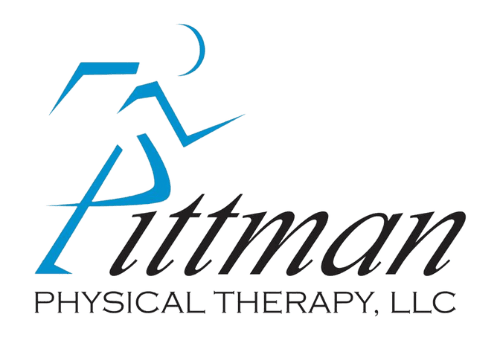What is Spinal Manipulation?
Spinal manipulation is a hands-on technique that involves applying a controlled, sudden force to specific joints of the spine. The goal of spinal manipulation is to improve the alignment of the spine, reduce pain, and restore range of motion. This technique is widely used by chiropractors, physical therapists, and osteopaths to address a variety of musculoskeletal issues, including lower back pain and neck pain.
What is Spinal Adjustment?
Spinal adjustment, on the other hand, refers to a specific chiropractic technique where controlled force is applied to misaligned vertebrae in the spine to correct subluxations (misalignments). The goal is to restore proper alignment and improve the function of the nervous system. While spinal adjustments are commonly associated with chiropractors, the technique can also be integrated into physical therapy to promote spinal health.
Key Differences Between Spinal Manipulation and Spinal Adjustment
While both spinal manipulation and spinal adjustment are techniques used to treat back and neck pain, they differ in their approach, application, and the philosophy behind their use.
1. Technique and Application
- Spinal Manipulation: Involves a broader, hands-on approach where sudden, forceful thrusts are applied to a joint to restore movement and reduce pain. It is commonly used for joint mobilization and pain relief in physical therapy.
- Spinal Adjustment: Involves more precise, targeted movements to correct vertebral misalignments, known as subluxations, with the goal of restoring proper spinal alignment and improving nerve function.
2. Underlying Philosophy
- Spinal Manipulation: The primary goal is to restore joint movement and reduce stiffness. It is often used in physical therapy as part of a comprehensive treatment plan for back and neck pain.
- Spinal Adjustment: Chiropractic care focuses on correcting subluxations to optimize nervous system function, which can improve overall health. It is based on the philosophy that spinal misalignments can impact various bodily functions.
Benefits of Spinal Manipulation
1. Immediate Pain Relief
One of the main benefits of spinal manipulation is that it can provide immediate relief for certain types of back and neck pain. By improving spinal mobility and reducing pressure on the joints, patients often experience less pain and increased comfort after treatment.
2. Improved Range of Motion
For patients dealing with stiffness or limited mobility, spinal manipulation helps restore a full range of motion, enabling you to move more freely and engage in daily activities without discomfort.
3. Non-Invasive Treatment Option
Spinal manipulation offers a non-invasive alternative to surgery or medication for managing back and neck pain. This makes it an appealing option for individuals looking to avoid the risks associated with invasive procedures.
Benefits of Spinal Adjustment
1. Correcting Misalignments
Spinal adjustments specifically target misaligned vertebrae, which can impact nerve function. By correcting these misalignments, spinal adjustments can alleviate pain, improve posture, and enhance overall spinal health.
2. Enhancing Nervous System Function
Chiropractors believe that spinal misalignments can disrupt nerve signals, potentially leading to a variety of health issues. By performing a spinal adjustment, the chiropractor aims to restore proper nerve function, which may improve not only pain but also overall wellness.
3. Long-Term Health Benefits
In addition to providing pain relief, spinal adjustments can contribute to long-term health benefits by maintaining the alignment of the spine and promoting optimal bodily function. Many patients incorporate regular spinal adjustments into their wellness routine to prevent future problems.
When to Choose Spinal Manipulation vs Spinal Adjustment
Choose Spinal Manipulation If:
- You are dealing with acute or chronic back pain and need immediate pain relief.
- You want a non-invasive treatment option that focuses on restoring movement and reducing stiffness.
- You are undergoing physical therapy for joint or muscle-related issues and need to improve your range of motion.
Choose Spinal Adjustment If:
- You are experiencing pain related to spinal misalignments and want to correct subluxations.
- You are looking to improve nerve function and overall health through chiropractic care.
- You prefer a holistic approach that incorporates regular spinal adjustments as part of your wellness routine
How Pittman Physical Therapy Incorporates Spinal Manipulation
At Pittman Physical Therapy, we incorporate spinal manipulation into our personalized treatment plans to help patients relieve pain, restore mobility, and improve their quality of life. Whether you’re suffering from lower back pain, neck pain, or other spinal issues, our team of expert therapists can provide the care you need to recover naturally and effectively.
Why Choose Pittman Physical Therapy?
- Comprehensive Assessments: We perform thorough evaluations to determine whether spinal manipulation is the right course of treatment for your condition.
- Personalized Treatment Plans: Our physical therapists create individualized plans that incorporate spinal manipulation, manual therapy, and exercises to optimize recovery.
Proven Results: Many of our patients experience significant pain relief and improved function after spinal manipulation, making it a key component of their rehabilitation.
Conclusion
Understanding the difference between spinal manipulation and spinal adjustment can help you make the best decision for your treatment. While both techniques aim to improve spinal health, their methods and philosophies differ. At Pittman Physical Therapy, we specialize in using spinal manipulation to relieve pain, restore mobility, and help our patients avoid more invasive treatments. If you’re experiencing back or neck pain, schedule an appointment at one of our clinics in Collierville, Germantown, or Hernando to start your journey toward better spinal health.
FAQs
1. What’s the main difference between spinal manipulation and spinal adjustment?
Spinal manipulation involves broader, hands-on techniques for joint mobilization, while spinal adjustment targets specific misalignments to correct subluxations and improve nerve function.
2. Is spinal manipulation painful?
Spinal manipulation is typically not painful, though you may feel some pressure or mild discomfort during the treatment.
3. Can spinal adjustments improve overall health?
Yes, many chiropractors believe that correcting spinal misalignments can improve nervous system function and promote better overall health.
4. Which treatment is better for lower back pain?
Both treatments can be effective for lower back pain, but the choice depends on your specific condition and whether your pain is related to misalignment or joint stiffness.
5. Do I need a referral for spinal manipulation at Pittman PT?
In many cases, a referral is not necessary to start physical therapy. Contact us to learn more about how we can help you.



